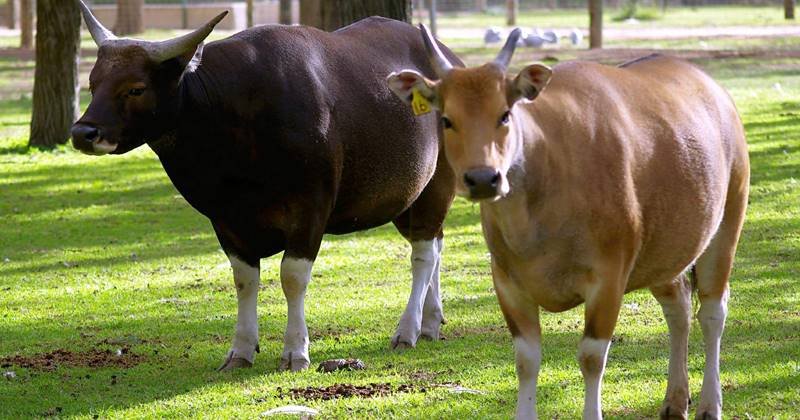
Banteng Bali, Unique Cattle With Majestic Horn
Banteng (Bos javanicus) is actually a farm animal, but unlike other livestock, banteng looks wild and intimidating with horns curving upwards, this animal is also difficult to catch, elusive yet shy. Banteng that has been domesticated is called Bali cattle, generally used by farmers to work in the fields, also being consumed for their meat.
Banteng’s native habitat is Southeast Asia, such as Indonesia, Malaysia, Vietnam, Thailand, Laos, Cambodia and so on. In Indonesia, banteng generally live in Java, Bali and Borneo Island. While outside Asia, banteng was introduced to northern Australia in Great Britain colonization era.
Characteristics
Wild banteng are categorized into three categories based on area from which they were originated. Banteng originating from Java, Bali and Madura in Indonesia, are generally called B. javanicus javanicus. While banteng habitat in Borneo usually have brown color, called B. javanicus lowi. Banteng outside Indonesia, spread in the Indochina region in general is called B. javanicus birmanicus.
Physically, banteng has pretty large body with an average height of 1.6 cm and a length of about 2.3 m. For male banteng, the weight ranges from 680 to 800 kilograms, there are also large ones weighing up to 1 ton. For female the size is slightly smaller. Banteng has a thin coat usually black or dark gray and also brown with white stockings on all four legs, the male bull has a hump on the back and a white pattern that adorns around the muzzle and eyes. Male banteng horns are generally quite intimidating, while shorter horns on female point inward.
Banteng is a herbivorous animal that likes grass, young twigs, leaves, fruits and even bamboo. Banteng can be quite active throughout the day and night, and in areas that are inhabited by humans they are usually more active at night or nocturnal. Banteng is a social animal that likes to live with herds ranging from small herds with only two members, to large ones totaling tens.
Status
The International Union for Conservation of Nature, or IUCN, has designated wild banteng as near-extinct animals, given that the numbers have continued to decline in mainland Asia in recent decades. The decline is quite alarming up to 80%, and it is estimated that the population in the wild is now only around 5,000 to 8,000.
This alarming decline is caused by many factors such as hunting, as well as crossbreed with local livestock that transmit diseases.
Sapi Bali (Bali Cattle)
Meanwhile, banteng population that has been domesticated or called Bali cattle is still quite large even though it has also declined. Artificial insemination was first performed on Balinese cows in the 1970s and this helped to increase the population. Strong and tame Bali cows are farmers’ favorite animals for plowing fields, but they are not suitable to pull or carry loads since their hooves are quite soft.
Bali Safari Marine Park Bali has the Sapi Bali or Banteng collection as the attraction and education to our beloved visitors.
Check Also
